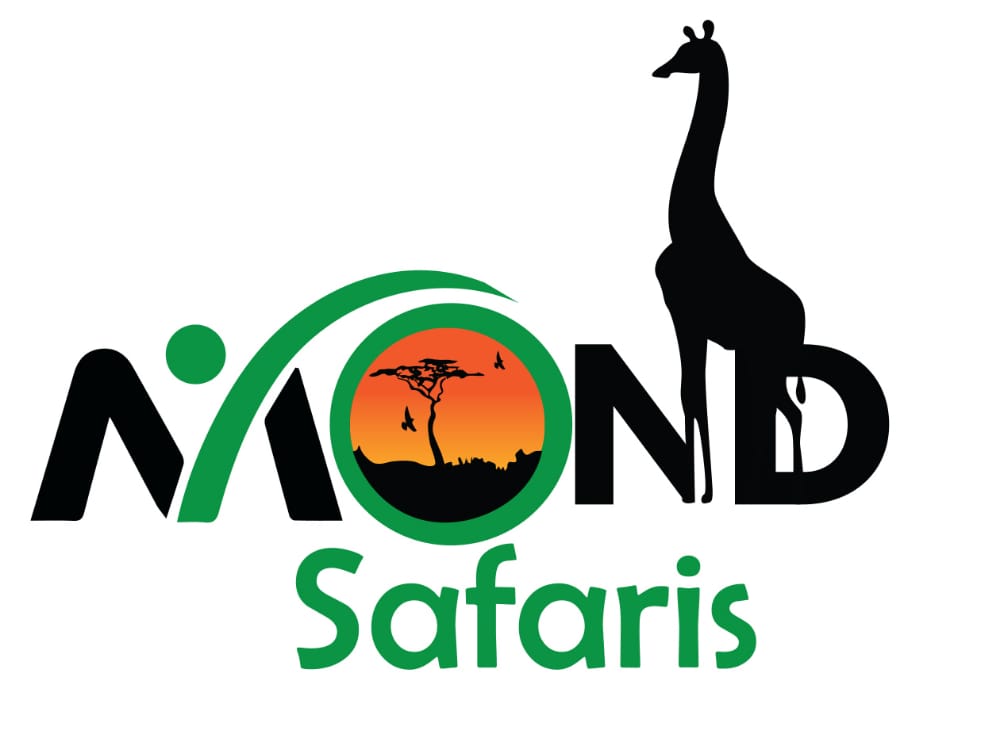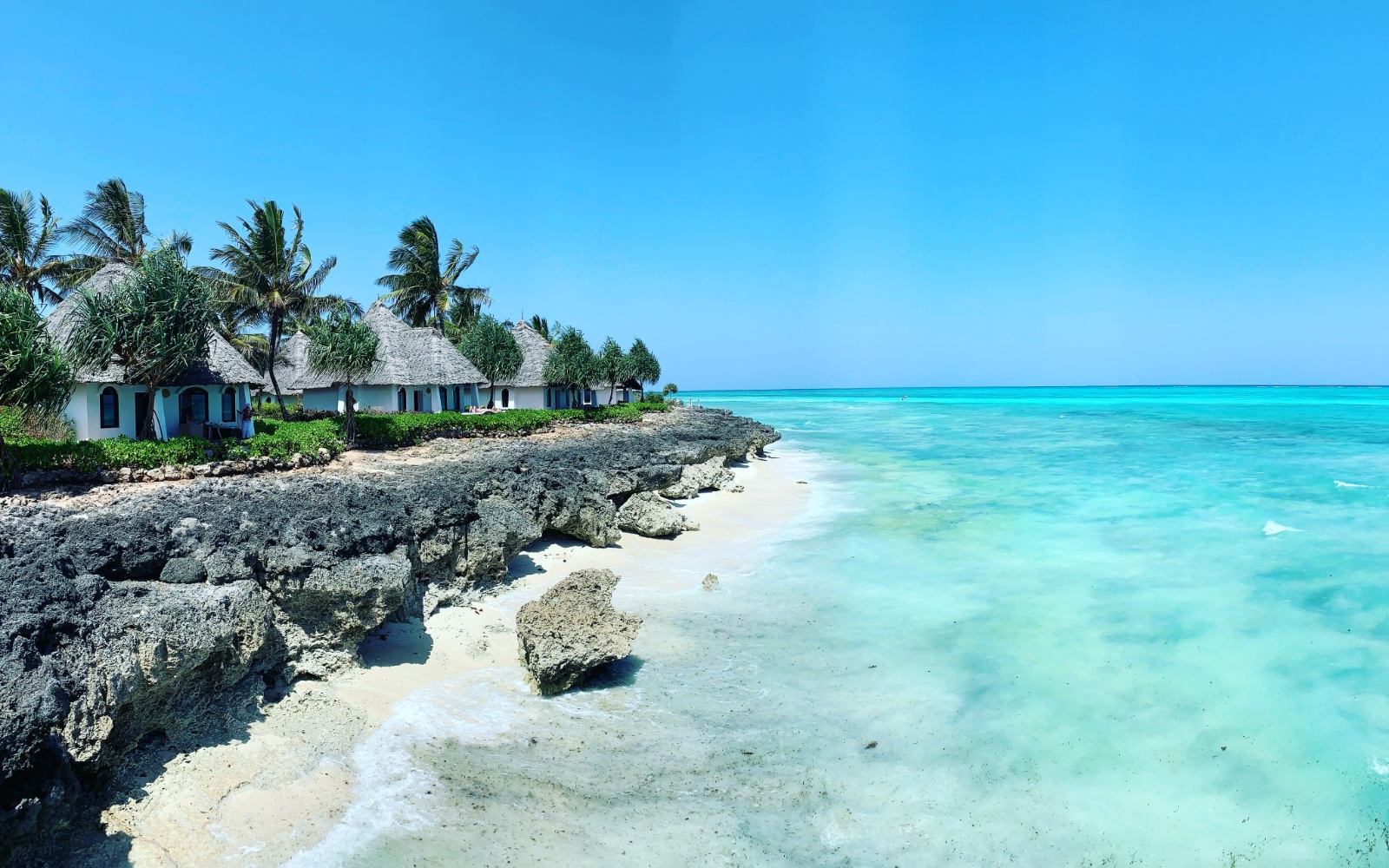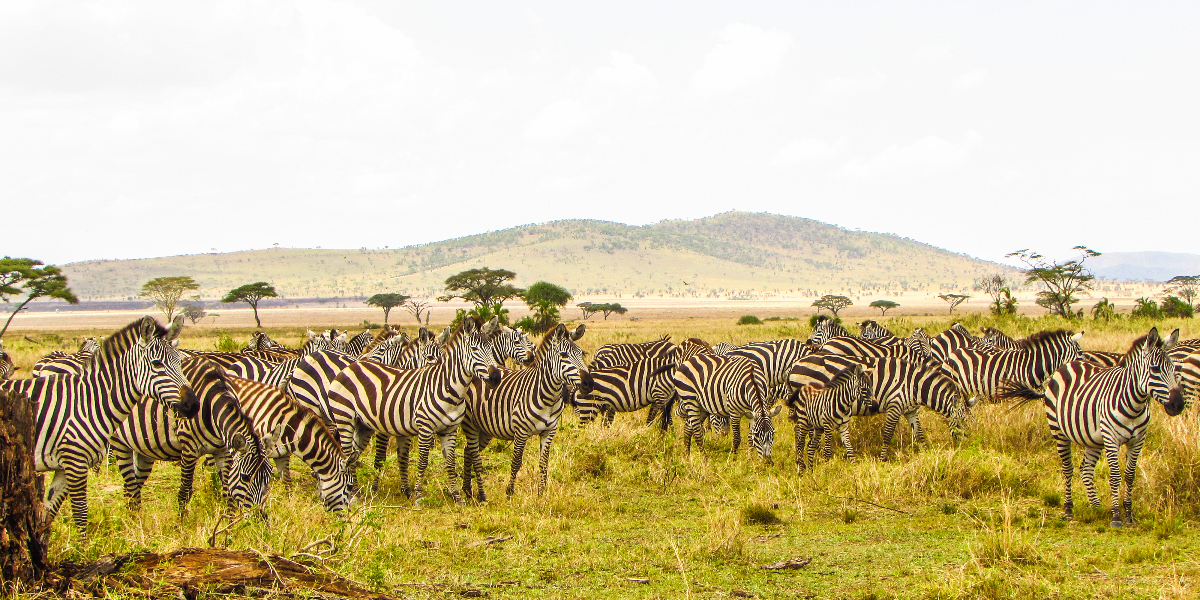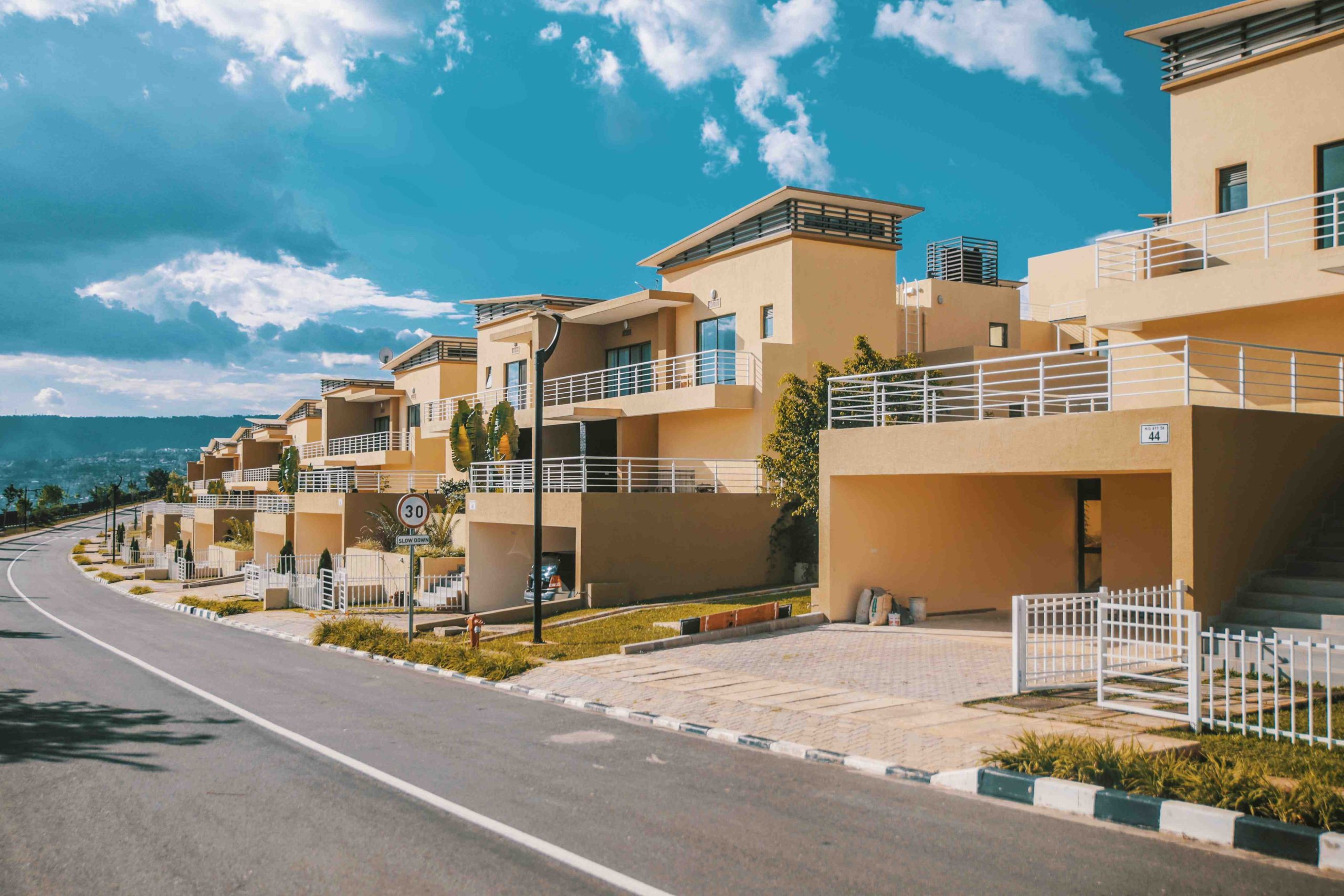Embark on an African adventure like never before as we unveil the top 7 best…

Gorilla Trekking in Uganda
Introduction to Gorilla Trekking in Uganda

Gorilla trekking is one of the most exciting adventures one can go for in Uganda. Uganda is home to almost half of the world’s remaining mountain gorillas, which are only found in three countries: Uganda, Rwanda, and the Democratic Republic of Congo. Gorilla trekking involves hiking through dense forests and mountainous terrain in search of these endangered primates. The experience of coming face to face with these majestic creatures in their natural habitat is truly unforgettable.
Gorilla trekking in Uganda takes place in two national parks: Bwindi Impenetrable National Park and Mgahinga Gorilla National Park. Bwindi Impenetrable National Park is located in the southwestern part of the country and is home to almost 500 mountain gorillas, while Mgahinga Gorilla National Park is located in the southwestern corner of Uganda and is home to a small population of gorillas.
Gorilla trekking in Uganda is a regulated activity, with a limited number of permits available each day. This helps to protect the gorillas and their habitat, while also ensuring that visitors have a more intimate and meaningful experience. Permits can be obtained through a licensed tour operator, and it is recommended to book in advance as they can sell out quickly.
The trek to see the gorillas can be challenging and physically demanding, but the reward is well worth the effort. The experience of spending an hour in the company of a family of gorillas is a truly unique and humbling experience. It is also an opportunity to contribute to the conservation efforts of these endangered animals, as a portion of the permit fees goes towards supporting conservation efforts and the local communities surrounding the parks.
Overall, gorilla trekking in Uganda is an adventure of a lifetime that offers a rare opportunity to observe these magnificent creatures in their natural habitat, while also supporting conservation efforts and the local communities.
Planning Your Gorilla Trekking Trip in Uganda
Uganda is a beautiful East African country known for its diverse wildlife and stunning natural landscapes. One of the most sought-after experiences in Uganda is gorilla trekking, where visitors can track and observe endangered mountain gorillas in their natural habitat. If you are planning a gorilla trekking trip to Uganda, here are some tips to help you make the most of your experience.
Choose the right time to go: The best time to go gorilla trekking in Uganda is during the dry season, which runs from June to September and December to February. During this time, the trails are less slippery, and the gorillas are easier to spot as they tend to come out in the open. However, it’s important to note that gorilla trekking can be done all year round.
Obtain the necessary permits: To go gorilla trekking in Uganda, you will need a gorilla trekking permit, which can be obtained from the Uganda Wildlife Authority (UWA). It’s important to obtain your permit well in advance, as they can sell out quickly, especially during peak season. The cost of a permit is currently $700 per person.
Choose a reputable tour operator: While it is possible to organize a gorilla trekking trip independently, it’s highly recommended to use a reputable tour operator like mond safaris Uganda. A tour operator will handle all the logistics, including transportation, accommodation, and permits, making your trip more enjoyable and stress-free.
Be physically prepared: Gorilla trekking can be physically demanding, as the trails can be steep and rugged. It’s important to be in good physical shape and to wear appropriate hiking gear, including sturdy hiking boots, long pants, and a rain jacket.
Respect the gorillas and their habitat: When trekking to see the gorillas, it’s important to follow the rules and regulations set by the Uganda Wildlife Authority. You should maintain a safe distance from the gorillas, avoid touching them, and avoid leaving any litter or waste in the forest. This helps to protect the gorillas and their habitat, ensuring that future generations can also enjoy this incredible experience.
Be flexible: Gorilla trekking can be unpredictable, as the gorillas are wild animals that move around the forest freely. It’s important to be flexible and prepared for the unexpected, such as a change in the gorilla’s location or weather conditions.
In summary, gorilla trekking in Uganda is a once-in-a-lifetime experience that requires careful planning and preparation. By choosing the right time to go, obtaining the necessary permits, using a reputable tour operator, being physically prepared, respecting the gorillas and their habitat, and being flexible, you can make the most of your gorilla trekking trip in Uganda.
Where to Go Gorilla Trekking in Uganda
Uganda is one of the top destinations in the world where gorilla trekking is done. The country is home to nearly half of the world’s remaining population of mountain gorillas, making it the best place for visitors who want to see these majestic creatures up close. Here are some of the best places to go for gorilla trekking in Uganda:
Bwindi Impenetrable National Park: This UNESCO World Heritage Site is home to over 400 mountain gorillas, making it the most popular place for gorilla trekking in Uganda. The park is located in the southwestern part of the country, close to the border with Rwanda and the Democratic Republic of Congo. Bwindi Impenetrable National Park offers visitors the chance to hike through dense forests and rugged terrain to see these amazing animals in their natural habitat.
Mgahinga Gorilla National Park: Located in the southwestern part of Uganda, Mgahinga Gorilla National Park is another popular destination for gorilla trekking. The park is part of the Virunga Mountains, which are shared by Uganda, Rwanda, and the Democratic Republic of Congo. The park is home to a small population of mountain gorillas, but also offers the opportunity to see other primates such as golden monkeys and colobus monkeys.
When planning a gorilla trekking trip in Uganda, it’s important to remember that permits are required to enter the parks and see the gorillas. These permits can be difficult to obtain, so it’s recommended to book well in advance to secure a spot. Additionally, visitors should be prepared for a physically demanding trek, as the terrain can be steep and challenging. However, the reward of seeing these magnificent creatures in their natural habitat is well worth the effort.
What to Expect During Your Gorilla Trekking Experience in Uganda
Gorilla trekking in Uganda is a unique and unforgettable experience that allows you to get up close and personal with some of the most incredible creatures on the planet. Here’s what you can expect during your gorilla trekking experience in Uganda:
Preparation and briefing
Before embarking on your trek, you will receive a briefing on what to expect during the trek, the rules and regulations that must be followed, and some background information about the gorillas you will be visiting. You will also be advised on what to wear and carry, such as appropriate clothing, sturdy hiking boots, a waterproof backpack, and a camera with extra batteries and memory cards.
Hiking to the gorillas
The actual trek to the gorillas can take anywhere from one to six hours depending on the location of the gorilla family you are visiting. You will be accompanied by a team of experienced guides and trackers who will lead you through the rugged terrain of the forest, helping you navigate steep hills, muddy trails, and thick vegetation. The trek can be physically demanding, so it’s important to be in good physical shape.
Meeting the gorillas
Once you reach the gorilla family you will be visiting, you will spend an hour in their presence observing and taking photos of these magnificent creatures. The gorillas are habituated to human presence, so they are not likely to be aggressive towards you. However, it’s important to follow the rules and regulations that were explained to you during the briefing to avoid disturbing or endangering the gorillas.
Cultural encounters
Many gorilla trekking tours in Uganda offer cultural experiences as part of the package. These can include visiting local communities, interacting with traditional healers, or learning about the conservation efforts being made to protect the gorillas and their habitats.
Conservation contributions
Part of the fee for gorilla trekking in Uganda goes towards conservation efforts aimed at protecting the gorillas and their habitats. By participating in gorilla trekking, you are directly contributing to the conservation of these incredible creatures.
In conclusion, gorilla trekking in Uganda is a once-in-a-lifetime experience that requires physical fitness, mental preparation, and adherence to rules and regulations. With the help of experienced guides, you will have the opportunity to observe these incredible animals in their natural habitat and contribute to their conservation.
Tips for a Successful Gorilla Trekking Trip in Uganda
Gorilla trekking is one of the most thrilling and rewarding experiences for nature enthusiasts and wildlife lovers. Uganda is one of the few places in the world where you can find mountain gorillas, and trekking to see them in their natural habitat is an unforgettable experience. However, it can be a challenging undertaking, and planning ahead is crucial to ensure a successful gorilla trekking trip. Here are some tips to make the most of your gorilla trekking adventure in Uganda:
Book in advance: Gorilla trekking permits are limited, and demand is high. It is recommended to book your permits well in advance to avoid disappointment. Permits can be obtained through the Uganda Wildlife Authority or through a registered tour operator.
Get fit: Gorilla trekking involves hiking through dense forests, steep slopes, and rugged terrain. It is essential to be in good physical shape to endure the long and challenging hikes. Try to train before your trip, by hiking, walking or running, to build up your stamina.
Wear the right gear: Trekking through the forest can be wet and muddy, so it is crucial to wear the appropriate gear. Comfortable, lightweight, and waterproof clothing is essential, as well as sturdy hiking boots with good grip. A hat and sunscreen are also necessary, as well as insect repellent and a waterproof backpack to protect your belongings.
Follow the instructions of your guide: During the trek, you will be accompanied by an experienced guide who knows the area well. It is important to listen to their instructions and follow their lead. The guides will ensure that you are safe and that you get the best view of the gorillas.
Keep a safe distance: Mountain gorillas are endangered species and are susceptible to human diseases. It is crucial to keep a safe distance and avoid touching or feeding them. A distance of at least 7 meters is required, and if the gorillas approach you, you should remain still and avoid making eye contact.
Be patient: Finding the gorillas can take time, and the trek can last several hours. It is important to be patient and not give up. The experience of seeing these magnificent creatures in their natural habitat is worth the wait.
Respect the environment: It is essential to respect the environment and leave no trace of your visit. Take all your garbage with you, and do not disturb the wildlife or their habitat.
Gorilla trekking is a once-in-a-lifetime experience that should be approached with care and respect. By following these tips, you can ensure a safe and unforgettable experience in Uganda’s beautiful wilderness.
The Importance of Gorilla Conservation in Uganda
Gorillas are one of the most fascinating and majestic animals in the world. These primates are an important part of the natural ecosystem, and their survival is crucial for maintaining the balance of the ecosystem. Uganda is home to one of the world’s largest populations of mountain gorillas, making it an important country for gorilla conservation.
There are two species of gorillas: the eastern and western gorillas. The eastern gorillas are found in Uganda, Rwanda, and the Democratic Republic of Congo, while the western gorillas are found in Cameroon, Nigeria, and the Central African Republic. In Uganda, there are two national parks that are home to the endangered mountain gorillas: Bwindi Impenetrable National Park and Mgahinga Gorilla National Park.
The importance of gorilla conservation in Uganda cannot be overstated. Mountain gorillas are critically endangered, with only about 1,000 individuals remaining in the wild. Gorilla conservation in Uganda is essential for the survival of these magnificent creatures. The survival of mountain gorillas is not only important for ecological reasons but also for the economic development of Uganda. Gorilla tourism is a significant source of revenue for the country.
Gorilla tourism is an important aspect of Uganda’s economy. The government of Uganda recognizes the importance of gorilla conservation and has made efforts to protect the mountain gorillas. Uganda has developed a successful gorilla tourism industry, which provides revenue for the country and creates jobs for local communities. In addition, gorilla conservation has helped to protect the natural environment, which in turn supports other wildlife species and promotes ecotourism.
The benefits of gorilla conservation in Uganda are not limited to the economic development of the country. Gorillas are an important part of the natural ecosystem and their survival has a significant impact on other wildlife species. Gorillas are also important for maintaining the balance of the ecosystem, as they play a role in seed dispersal and plant regeneration.
In conclusion, gorilla conservation is of utmost importance in Uganda. The survival of mountain gorillas is essential for the ecological balance of the region, the economic development of the country, and the preservation of these magnificent creatures. It is essential that efforts to conserve gorillas in Uganda continue, as the future of these animals and their habitat depend on it.
What to Pack for Gorilla Trek in Uganda
Gorilla trekking is an exhilarating activity that draws thousands of tourists to Uganda every year. It offers a rare opportunity to come face-to-face with some of the most majestic creatures on the planet in their natural habitat. However, to fully enjoy the experience, you need to be well-prepared, especially when it comes to packing. Here’s a comprehensive guide on what to pack for gorilla trekking in Uganda:
1. Good Hiking Boots: Gorilla trekking involves hiking through steep and slippery terrain, so you need good hiking boots that provide good ankle support and traction.
2.Long-Sleeved Shirts: Gorillas are susceptible to human diseases, and tourists are advised to keep a distance of at least 7 meters. Wearing long-sleeved shirts will help protect your skin from any exposure.
3. Light Trousers: Opt for comfortable, lightweight trousers that offer flexibility when hiking through the dense forest.
4. Rain Jacket: Uganda is a tropical country, and the rainforest where gorillas live receives frequent rains. A good rain jacket will protect you from the rain and keep you dry.
5. Insect Repellent: The rainforest is home to various insects and mosquitoes that may bite you. Wearing insect repellent will help you avoid mosquito bites and reduce the risk of contracting mosquito-borne diseases.
6. Sunscreen: Although the forest canopy protects you from the sun, some rays can penetrate through the trees. It’s essential to apply sunscreen before setting off for the trek.
7. Hat and Sunglasses: Protect your face and eyes from the sun’s glare by wearing a hat and sunglasses.
8. Camera and Binoculars: You’ll want to capture the breathtaking views and wildlife encounters you experience during the trek. A good camera and binoculars will come in handy for this purpose.
9. Snacks and Water: Gorilla trekking can take several hours, so it’s essential to carry enough water and snacks to keep you energized.
10. Extra Batteries and Memory Cards: You don’t want to run out of battery or memory space while capturing the moments. Carrying extra batteries and memory cards will help you avoid such situations.
In conclusion, packing for a gorilla trekking trip requires careful consideration to ensure that you have a comfortable and enjoyable experience. With the above items in your backpack, you’ll be ready to embark on a memorable adventure that will stay with you for a lifetime.
Best Time to Go Gorilla Trek in Uganda
Gorilla trekking is one of the most sought-after experiences for wildlife enthusiasts and adventure seekers in Uganda. However, the best time to go gorilla trekking is a crucial factor to consider to ensure you have the most enjoyable and successful trip possible. Here is a guide on the best time to go gorilla trekking in Uganda:
The Dry Season (December to February and June to September)
The dry season is the best time to go gorilla trekking in Uganda. During this period, the weather is generally dry and sunny, making it easier to trek through the forest. The trails are also less slippery, and the visibility is better, allowing you to get the best views of the gorillas.
The Rainy Season (March to May and October to November)
While the rainy season may not be the best time to go gorilla trekking, it does have its advantages. The forest is lush and green during this time, and there is plenty of food for the gorillas. Additionally, gorilla permits are often discounted during the rainy season, making it a more affordable time to go gorilla trekking.
It is important to note that the weather in Uganda can be unpredictable, and it can rain at any time of the year. Therefore, it is essential to be prepared for any weather condition, regardless of the time of the year you choose to go gorilla trekking.
Other Factors to Consider
Aside from the weather, there are other factors to consider when deciding the best time to go gorilla trekking in Uganda. The gorillas are constantly on the move in search of food, and they may be harder to find during the rainy season when they have more food options. Additionally, gorilla permits can be limited, so it is advisable to book your permit in advance, especially during the peak season.
In conclusion, the best time to go gorilla trekking in Uganda is during the dry season, which runs from December to February and June to September. However, the rainy season also has its advantages, such as discounted gorilla permits and lush vegetation. It is important to be prepared for any weather condition, regardless of the time of the year you choose to go gorilla trekking, to ensure you have the best experience possible.
Other Wildlife and Cultural Experiences in Uganda

Uganda is a country in East Africa that is known for its abundant wildlife and diverse cultural experiences. In addition to gorilla trekking, there are many other wildlife and cultural experiences that visitors can enjoy in Uganda.
One of the most popular wildlife experiences in Uganda is a safari in one of the country’s many national parks. Uganda is home to over 100 mammal species, including elephants, lions, leopards, giraffes, and many others. Some of the most popular national parks for safari include Queen Elizabeth National Park, Murchison Falls National Park, and Kidepo Valley National Park. Visitors can take guided tours, drive through the parks in a 4×4 vehicle, or even go on a hot air balloon ride for a unique perspective on the landscape and wildlife.
For those interested in birdwatching, Uganda is a paradise with over 1,000 species of birds. Birding safaris are popular in places like Bwindi Impenetrable National Park, Kibale Forest National Park, and Semuliki National Park.
Another unique wildlife experience in Uganda is chimpanzee trekking. Uganda is home to several habituated chimpanzee communities, and visitors can go on guided treks to see these intelligent primates up close. Kibale Forest National Park and Budongo Forest Reserve are two popular locations for chimpanzee trekking.
In addition to wildlife experiences, Uganda is rich in cultural experiences. The country is home to over 50 different ethnic groups, each with their own traditions and customs. Visitors can explore traditional villages, attend cultural festivals, and learn about traditional crafts such as basket weaving, pottery, and carving. Some popular cultural experiences in Uganda include visiting the Batwa pygmy community, attending a traditional wedding ceremony, and participating in a drumming and dancing workshop.
One of the most unique cultural experiences in Uganda is visiting the Karamojong people in the northeastern part of the country. The Karamojong are a pastoralist tribe who have maintained their traditional way of life for centuries. Visitors can learn about their customs, see their unique dress and jewelry, and even participate in a cattle raiding simulation.
Overall, Uganda offers a wealth of wildlife and cultural experiences for visitors to enjoy. Whether you are interested in exploring the country’s diverse wildlife or immersing yourself in its rich cultural heritage, Uganda has something for everyone.
frequent question asked about gorilla trekking in Uganda
Gorilla trekking in Uganda is a popular activity for tourists seeking to experience the beauty of the country’s wildlife and natural environment. If you’re planning a trip to Uganda for gorilla trekking, there are several questions you may have. Here are some of the most frequent questions asked about gorilla trekking in Uganda:
Where can I go gorilla trekking?
Gorilla trekking in Uganda is done in Bwindi Impenetrable National Park and Mgahinga Gorilla National Park. Bwindi Impenetrable National Park is located in southwestern Uganda, while Mgahinga Gorilla National Park is located in the southwestern part of the country, on the border with Rwanda and the Democratic Republic of Congo.
How many gorilla families are there in Uganda?
Uganda is home to 21 habituated gorilla families, each of which can be visited by a maximum of 8 visitors per day. These families are distributed across Bwindi Impenetrable National Park and Mgahinga Gorilla National Park.
How much does it cost to go gorilla trekking in Uganda?
The cost of gorilla trekking permits in Uganda is currently USD 700 per person, per trek. This fee includes park entrance fees, guide fees, and a contribution to the local communities around the parks. generally the 3-day Uganda trekking can cost you around $1600 with budget accommodation.
What is the best time of year to go gorilla trekking?
Gorilla trekking in Uganda can be done all year round, but the best time to visit is during the dry season, which runs from December to February and from June to September. During these months, the trails are less muddy, and the weather is generally pleasant.
How difficult is gorilla trekking in Uganda?
Gorilla trekking in Uganda can be physically demanding, as it involves hiking through dense forests and steep hills. Treks can last anywhere from 1 to 8 hours, depending on the location of the gorilla family you’re visiting. However, the effort is well worth it, as seeing the gorillas up close is an unforgettable experience.
How close can you get to the gorillas during a trek?
During a gorilla trek in Uganda, visitors are allowed to get as close as 7 meters (23 feet) to the gorillas. However, the guides will ensure that you maintain a safe distance to avoid disturbing the animals.
Is it safe to go gorilla trekking in Uganda?
Yes, it is generally safe to go gorilla trekking in Uganda, as long as you follow the guidelines set by the parks and your guides. The parks have a good safety record, and the guides are well trained to handle any situation that may arise during the trek.
In conclusion, gorilla trekking in Uganda is an incredible experience that offers visitors the opportunity to get up close and personal with these magnificent animals in their natural habitat. By considering the above frequently asked questions, you can plan your trip effectively and make the most out of your gorilla trekking adventure.
For more information, please click on this link https://mondsafaris.com/gorilla-safaris/ for gorilla trekking safaris or visit our website https://mondsafaris.com/




